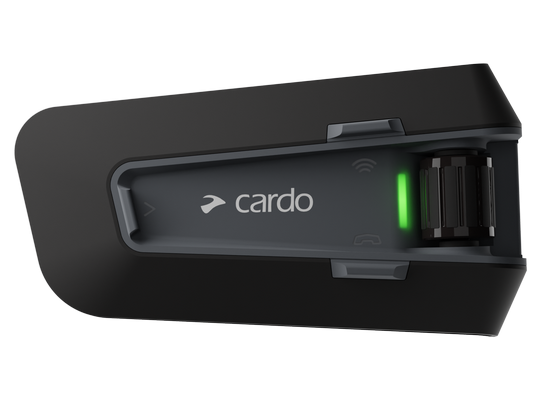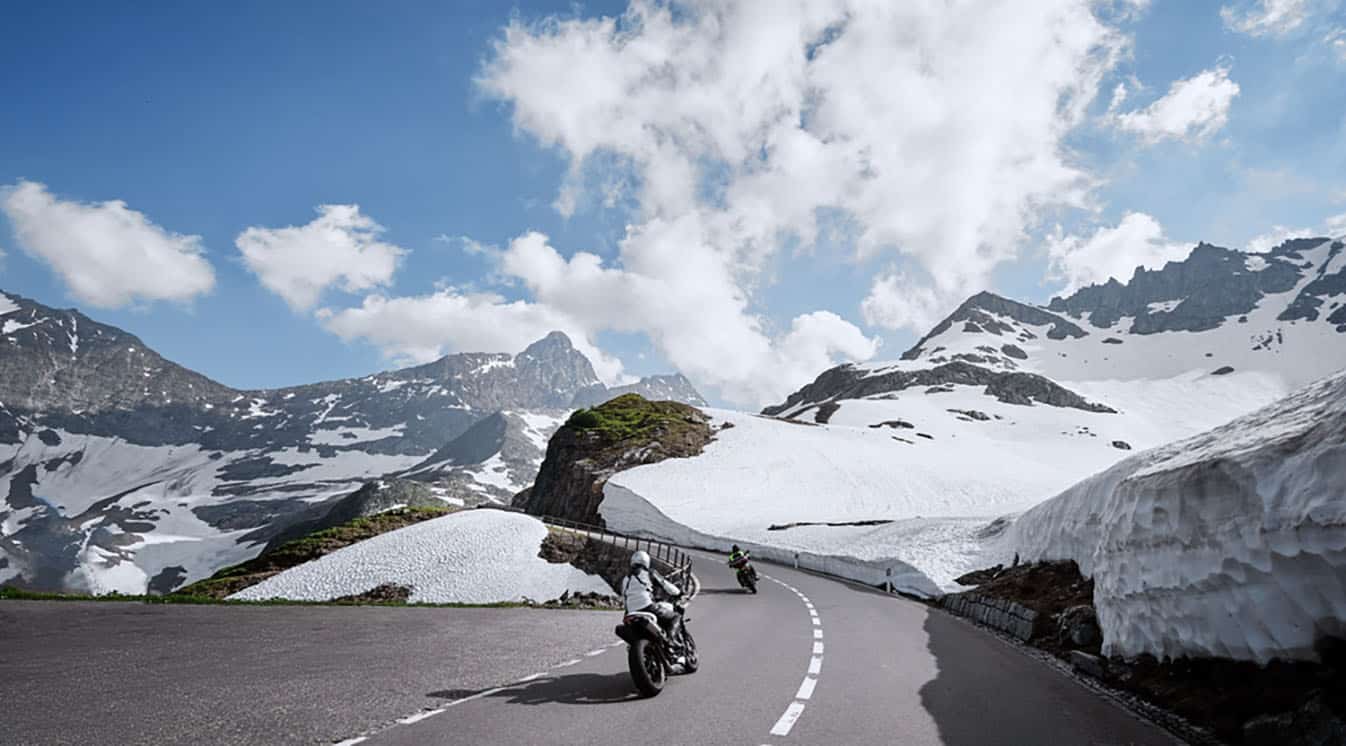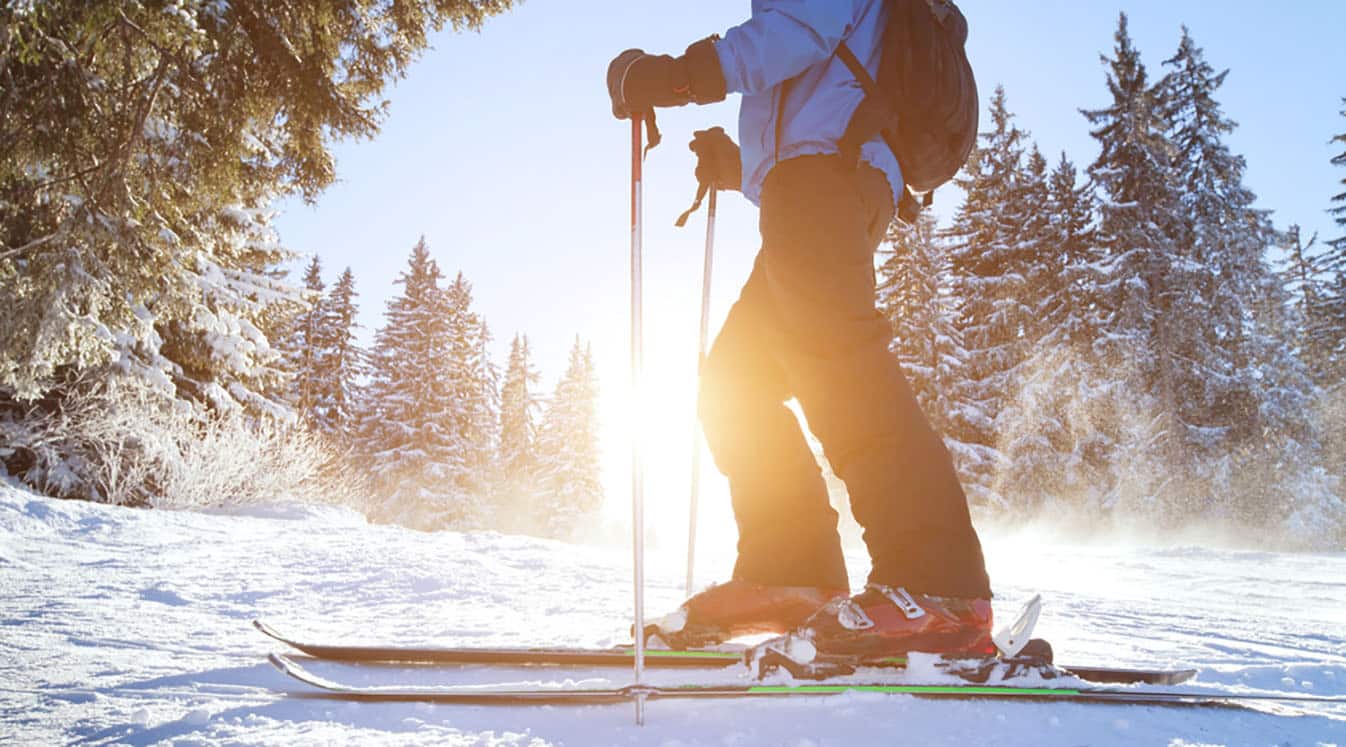Wearing the right gear and removable layers will help you stay warm on your motorcycle all season long, except when it dips below freezing — 32 degrees Fahrenheit — which is your sign to throw in the towel. Icy roads increase the risk of slips and falls. There’s nothing to do but stay home and wait for the temperature to rise.
Not dressing for the cold can also lead to health and safety risks. You may have trouble navigating and controlling the bike due to cold stress or frostbite. Wearing too much clothing will also limit your range of motion. Choose every part of your ensemble carefully to pack in as many riding days before the worst of winter spoils the fun. Discover our top tips on how to stay warm on a motorcycle below.
Use Motorcycle Helmet Communication to Talk Hands-Free While Riding
1. Layer Up
Wearing multiple layers gives you the option of adding/removing clothing based on the weather. Remember — the faster you ride, the colder you will be. Increasing elevation can also lead to sudden temperature changes. Build from the inside out, starting with a moisture-wicking layer of wool, nylon or polyester. The fabric will absorb the perspiration and dry quickly instead of leaving you drenched in sweat. Excess moisture can increase your risk of frostbite by reducing your body temperature.
Add fleeces, thermals and long underwear before choosing your outermost layer, which should cover your entire body from the neck down with your pant legs overlapping with your socks and your sleeves tucking inside your gloves.
2. Keep It Waterproof
The outer shell must be completely waterproof, along with your gloves and boots. Water should be able to slip through the cracks of your ensemble. Many riders prefer to wear a waterproof, windproof bodysuit over layers of moisture-wicking fabric to minimize the number of seams and cracks. For example, you don’t want your coat riding up, exposing your lower back, with cold water dripping down your pants.
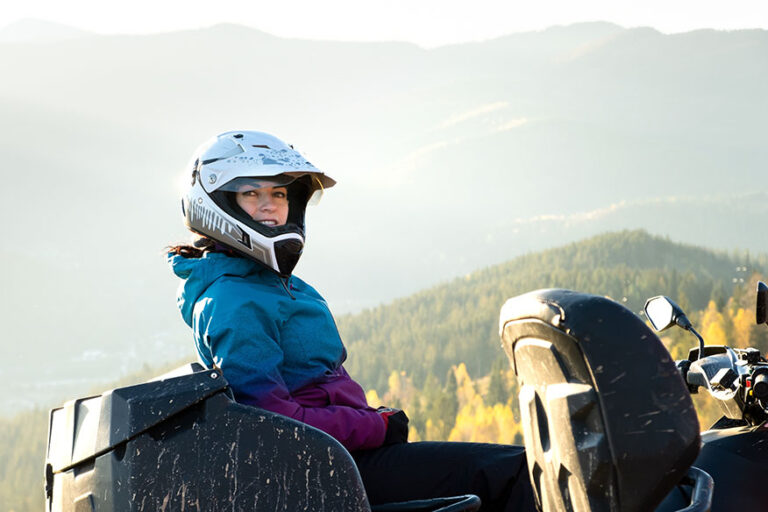
3. Coordinate with Your Crew
The cold may limit how long you can stand to be on the road. Use motorcycle helmet communication when riding in a group to check on each other. If you need a break or feel your body temperature dropping, you can speak to the receiver to let everyone know you are pulling over so you don’t get left behind. You can also use the device to wirelessly connect to your phone or GPS for real-time weather alerts and traffic delays. The system automatically reconnects when you’re in range to help you keep your hands on the handlebars. Use motorcycle helmet speakers with clear, crisp audio to hear everything being said without missing important sounds around you.
Never Miss a Beat with Motorcycle Bluetooth Speakers
4. Add Auxiliary Heat
If all these layers aren’t enough to keep you warm, use heated motorcycle gear with rechargeable batteries, such as a heated vest underneath your coat or suit, heated gloves for maximum control or a heated seat for keeping your bottom toasty. Check the battery life to ensure it will last the duration of your trip, and bring extra layers in case of technical difficulties.
5. Reduce Wind Exposure
The wind will make it feel anywhere from 10 to 20 degrees colder than what it says on the thermostat, but you can reduce the windchill by adding a windscreen or windshield to the front of your bike. Choose the right size and height to match your make and model with your eye line just above the top of the plastic for improved visibility. Adding a screen reduces rider fatigue by making it easier to hold yourself up.
6. Pad Your Helmet
Tuck a thin layer of moisture-wicking fabric underneath your helmet to lock in the warmth. You can use a skull cap or liner to prevent air from escaping from the top. Wearing a full-face helmet will keep you warmer than a half-face helmet by insulating your face and reducing wind exposure. Use an anti-fog visor for a clear view.
7. Stay Nourished
Eating a proper meal rich in nutrients and protein will help you go the extra mile. It may seem like you’re sitting still, but riding can burn anywhere from 100 to 300 calories per hour. Shivering consumes more calories as your body fights to keep you warm. Chow down on warm foods before heading out, and pack a snack and water in case you need a boost.
Add these items to your shopping list to get the most out of your motorcycle when there’s a chill in the air.
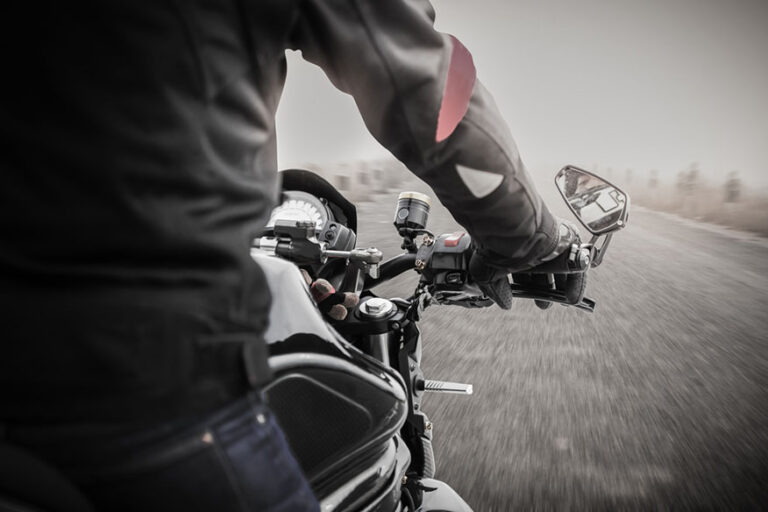
Source: pixfly/Shutterstock.com
Just because the temperature is above freezing doesn’t mean it’s safe to ride. Use this guide along with these tips for riding a motorcycle in the winter to prepare for wetter streets, falling snow and other safety considerations.


